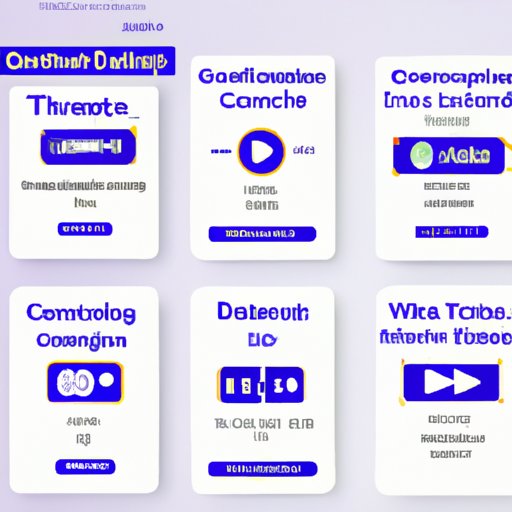
Introduction
Facebook is a vast platform with billions of users worldwide, where businesses and individuals can post their thoughts, news, and updates. While the sole purpose of Facebook posts is to share information, some posts are readily shareable, while others are not. The goal of this article is to provide tips and examples of how to make Facebook posts shareable. The article is written for individuals and businesses who want to increase their post engagements, reach, brand awareness, and influence.
Use Visual Content
Images and videos are easier to consume than text and are more likely to grab the attention of users scrolling through their feed. Visual content is a great way to express your ideas and tell your story without words.
There are various types of visual content that you can use to make your Facebook posts shareable. Some examples include pictures, memes, infographics, animated videos, and live videos.
Here are some tips for creating visually appealing content that users are likely to share:
- Use high-quality images and videos that are relevant to the post.
- Add text overlays and captions that explain the image or video’s context.
- Include your brand’s logo or watermark to increase brand recognition.
- Add humor, emotion, or inspirational messages to trigger an emotional response from users.
- Create a visual contrast between your post and the news feed to grab the user’s attention.
Keep it Concise
Long paragraphs can be tedious and challenging to read for users scrolling through their feeds. Keeping your posts concise can make them more likely to be shared since users can quickly read and understand your message.
Here are some benefits of creating short and concise Facebook posts:
- Users are more likely to read and engage with shorter posts than longer ones.
- Short posts are more likely to grab users’ attention while scrolling through their feeds.
- Short posts can be easily shared on other social media platforms.
Here are some tips for creating concise content:
- Stick to the main point of your post and avoid using filler words.
- Use bullet points or numbered lists to break down complex ideas.
- Write short sentences and use active voice to increase clarity.
- Avoid using jargon and technical terms that users may not understand.
Use Hashtags
Hashtags are used to categorize content and make it easier for users to find posts with similar topics. They are also a great way to increase the reach and visibility of your posts.
Here are some tips for using relevant hashtags in your posts:
- Use relevant and specific hashtags that relate to the content of your post.
- Avoid using too many hashtags in your posts, as it can look spammy.
- Find popular and trending hashtags related to your post by using tools like Hashtagify and Rite Tag.
- Create your brand’s unique hashtags to increase brand recognition and user engagement.
Make it Controversial
Controversial posts tend to generate more engagement and attention than neutral posts. They trigger an emotional response from users, which can cause them to share the post or express their opinion in the comments section.
Here are some tips for creating controversial content:
- Pick trending topics that are relevant to your brand or industry.
- Use techniques like asking questions, making bold statements, or presenting a different perspective to spark debate.
- Avoid making offensive or disrespectful comments that may damage your brand’s reputation.
- Maintain a neutral and respectful tone to encourage healthy discussion and engagement.
Use Emojis
Emojis add a fun and playful touch to your posts. They help break up text and add emotion, which can help your post stand out in the feed.
Here are some tips for using emojis effectively:
- Use emojis that are relevant to the content of your post.
- Avoid using too many emojis in your posts, as it can look unprofessional.
- Create a consistent emoji brand that aligns with your brand’s voice and tone.
- Use emojis to replace text or break up long paragraphs.
Include CTA
CTA stands for Call-To-Action and is used to encourage users to take a specific action. It is beneficial for businesses and individuals who want to increase engagement or drive traffic to their website.
Here are some tips for creating effective CTA:
- Use strong action verbs that encourage users to take action, such as “Shop Now” or “Sign up.”
- Place your CTA at the end of the post or in a prominent location where users can see it easily.
- Create urgency by adding a deadline or limited-time offer to your CTA.
- Avoid using too many CTA in one post, as it can confuse the user.
Timing and Frequency
Posting your content at the right time can significantly increase its reach and visibility. Since Facebook’s algorithm favors the most recent posts, posting too frequently can make your content irrelevant quickly.
Here are some tips for timing and frequency:
- Post when your audience is most active to increase the post’s visibility.
- Avoid posting too early or too late when users are less likely to be active.
- Post during non-peak hours to reduce competition and increase the likelihood of your post standing out.
- Avoid posting too frequently, as it can lead to a decrease in user engagement and interest.
Conclusion
Creating shareable Facebook posts is simple if you follow the right techniques. Using visual content, keeping it concise, adding hashtags, creating controversial content, using emojis, including CTA, and posting at the right time and frequency can all help increase your post visibility and engagement. Remember to create unique, relevant, and value-adding content to entice users to share it with their friends and followers.




